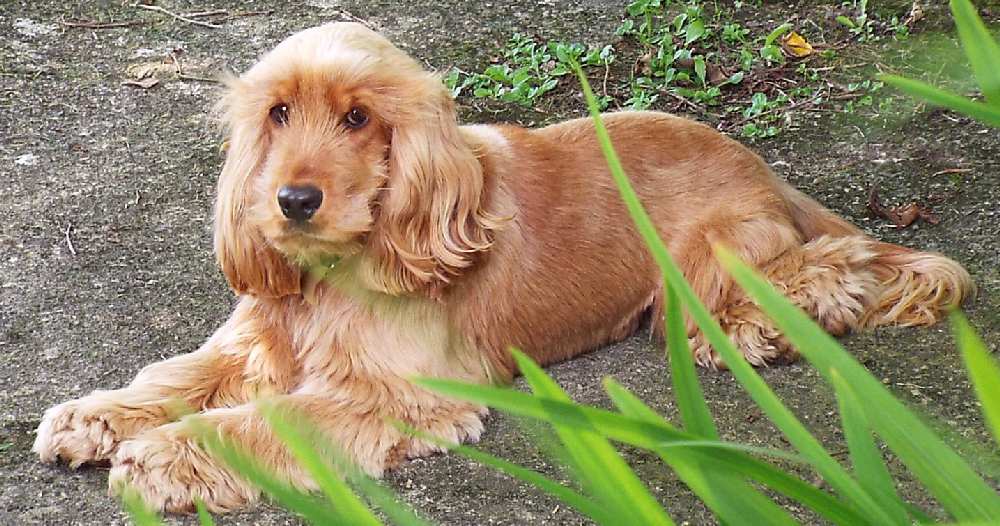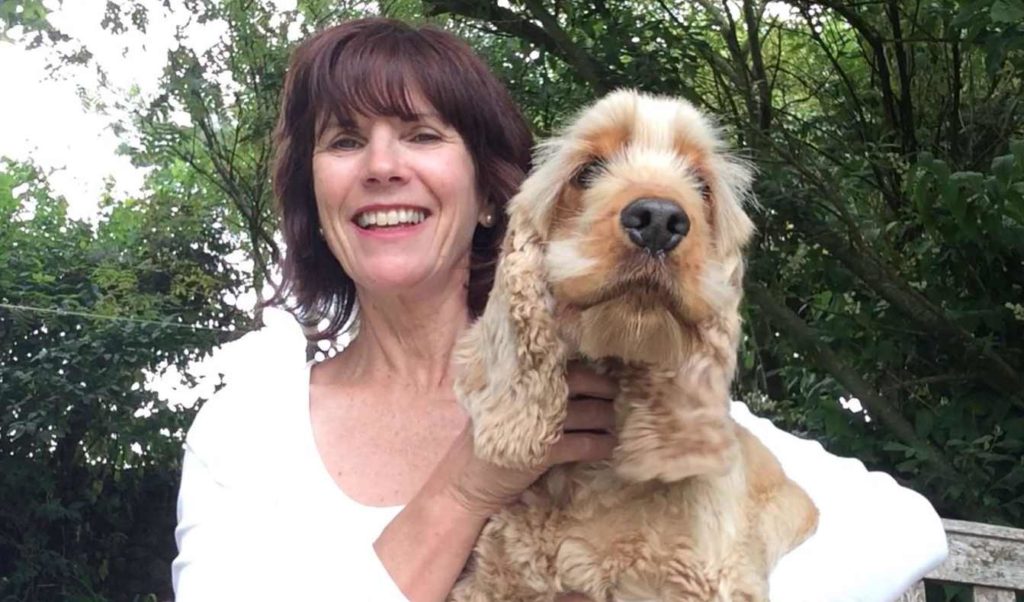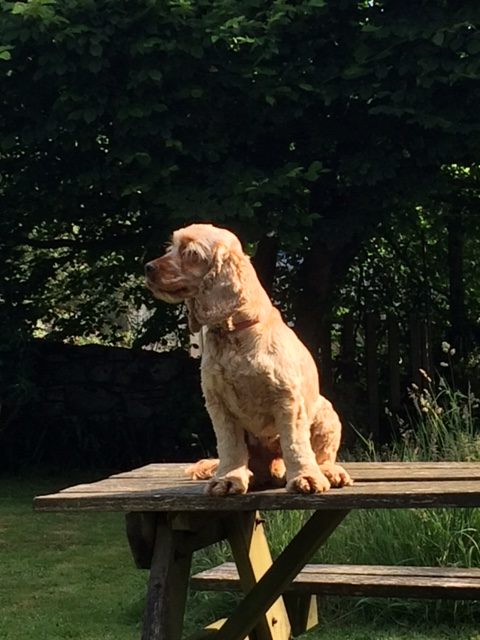English Cocker Spaniels are typically very lively.
They’re friendly and affectionate dogs. Being an intelligent breed of spaniel and armed with some good training techniques you will find that these dogs are a joy to live with and to train because they learn very quickly.
In the story of Jacob’s Magic Ears, this lively and happy English cocker spaniel finds he has much to learn, through his first two years a story takes Jacob and his readers on an adventure, of change and discovery.
If you are thinking of having one of these lovely animals as part of your family you may find some of my tips helpful.
Training always begins at home with short and regular sessions. Treats, yes bribes work wonders with this breed as they like Labradors enjoy their food and are led by their nose. Both breeds are hunting dogs and will do very well retrieving and finding things. Our spaniel’s favourite game is to play seek and find the dog biscuit; children love this too.
An English Cocker Spaniel is a great companion
Keeping commands simple especially at first will help your dog learn the command word and what it means. So, one-word commands along with their name work best especially at first. As an example, I would say “Jacob find.” This intelligent breed will easily learn many of the words that we use every day and will soon pick up on much of what you say on a regular basis, including names of other people and dogs that you see quite often. I am constantly amazed at what Jacob understands and have to remind myself that he is a dog!
All simple training can be extended into more complex commands as any of you with English cocker spaniels will learn. For instance, a simple first instruction you will want to teach is to sit. After he can do this for a couple of seconds you can extend the sit command to wait. You can include hand signals to reinforce the command and for more advanced training be used at a distance. Always use the same commands for each instruction and offer a treat of course.
A young puppy is a lively and somewhat wild animal and to live comfortably with a family training and obedience needs regular practice. The repeated instructions are soon instilled into the spaniels’ mind and good habits become normal ordinary behaviour.
For instance, jumping on the furniture, if that’s ok with you then that’s fine but if not, start the way you mean to carry on. If you like a cuddle on your lap then when he is invited he can come on your lap, but not to help himself.
Children need boundaries and guidance and so do dogs.
They also need calm, quiet and firm handling especially when experiencing a little too much excitement. Most young dogs can and do get very excited if you need to calm him down the best way is to go very quiet and stand very still.
Not long after we had our first English cocker spaniel I was cross because he had been jumping on the flower beds especially as in the past we had a dog that was so passive and quiet, a quick shout would have worked. This young lively fellow was having none of it and started to bark at me. I was quite amused and told him to “stop that” and he barked all the more!
I knew that this was a confident dog wanting his way. I stood still said “no,” turned my back on him and put my hands on my hips and said “no,” again and waited, he stopped barking and I kept very still with my back turned. Being ignored is horrible and shortly he came up behind me and sat, I turned around and stroked him saying “good boy.”
There are lots of very good dog and puppy training programs online. It’s a very good idea to get as well informed before bringing a new puppy home as you can.
As a breed, English Cocker Spaniels do make good pets and thrive well on lots of love, attention, training and exercise and benefit from a good sized garden to run around. Having said that they also like taking long naps and will wait patiently for a walk.
Firm but kind handling works with English Cockers
A firm “no” is a one-word command that needs to be instilled right from the get-go, along with “off.”
“Off,” is a command for all number of circumstances, like getting off the sofa. Use a finger and arm movement to show him where you want him to go…the floor. Use “off” when he has run off with a slipper or shoe or when he has retrieved a ball that you want him to drop. I always say thank you and if he is resistant stand still and say thank you with my hand out and a treat in the other hand. My left pocket is my treat pocket and a tap there now signals “do what I say and you can have a treat!”
Using “fetch,” when you throw a ball and use “off” with a treat for receiving the ball. Remain patient, he may move off and around with his trophy but this must be given back to you.
Stand still don’t follow or chase him, saying thank you with your hand out holding a treat. You can also use the “sit” and hand signal. Eventually, you will have him running right up to you and dropping the ball at your feet.
Start with short sessions so that your dog can stay focused on you and not lose concentration. Make time to do training sessions when you are not distracted and in a quiet place. Once your dog becomes reliable at the recall, and more focused on the training, it can take place even where there are distractions.
English cocker spaniels learn quickly and from a very early age they pick up habits both good and bad, so being the leader is important. It’s normal for dogs to respect this but if no one is showing leadership they may take it upon themselves to become the leader!



